Music Restoration
The Original Music
The printing industry has relied on a business model of spending a great amount of time to produce a master from which very many copies could be made. Printing runs of hundreds of copies were sold to music dealers who kept them in stock and sold them in their stores. Producing such a great number of copies kept the price low. It also gave the engravers a chance to show off their artistic skill with complex and beautiful covers, many in color. In a retail music store, these eye-catching covers were an effective tool for attracting the attention of customers. (For an excellent history of music printing with photos and video of engraving, visit musicprintinghistory.org.)
Sadly, this model no longer works. The hundreds of publishers have now been folded into only a few. These larger companies, for the most part, do not have copies of the music, much less the original plates from which to print new copies. Some sheet music has been maintained in collections, but most has been discarded after the death of the original owner. A few collectors and libraries continue to hold their sheet music collections but many have simply, usually automatically and poorly, scanned the originals, and then discarded the originals due to lack of storage space and the false impression that the storage of the image file fulfills their responsibility as an archive..
The few remaining copies, being a product of their time, were not intended to last for decades of use. The oil based inks have lasted but the paper with its residual acid content often has not. Tears are common, especially at folds and dog ears (folded corners meant to make page turning easier). Then, there are the markings, some heavy and obliterating, in pencil and in ink, stickers, cellophane and plastic tape, secondary stitching into the margins, trimming ragged edges of paper to fit shelves, mold and mildew infestation, insect damage, water damage, and missing parts of pages and even whole pages to deal with. If none of these problems is evident, there remains the wear and tear of the most useful music being played repeatedly over the many years. Most organists are familiar with what happens to music that they have used often: broken binding, loose signatures, detached pages, dried glue, and more.
Restoration
To make a piece of sheet music available for sale, it must be on good, sturdy acid-free paper, and the notes must be sharp and in high contrast. The paper finish should be flat and not reflective of light that would cause glare. The original paper size, if possible, should be used for the newly printed music, and the original colors and engravings and process color graphics should be reproduced. Any missing bits should be replaced and any errors should be corrected with notes on the reason for correction, if necessary. Since this music is decades past current styles and understanding, a short article on the music, its composer, and related subjects is helpful.
The examples below are greatly magnified for clarity of illustration. Choose the largest browser window to see the best detail. A musician’s eye is quite forgiving and tends to fill in missing bits or change in the mind any clearly erroneous notation. We would assume that a sharp before a B in the key of B flat is actually a natural, for instance. The case with words is certainly very different.
This example shows the replacing of a missing section. The first image is the scan from the original and the second is the restoration of the full image.


There are other considerations, such as the skewing that occurred when the paper rolled across the printing drum at an angle other than 90 degrees.


In some cases, the originals were in such good condition, that 100% of the detail could be restored. Just look at the varieties of decoration employed by this highly skilled engraver.
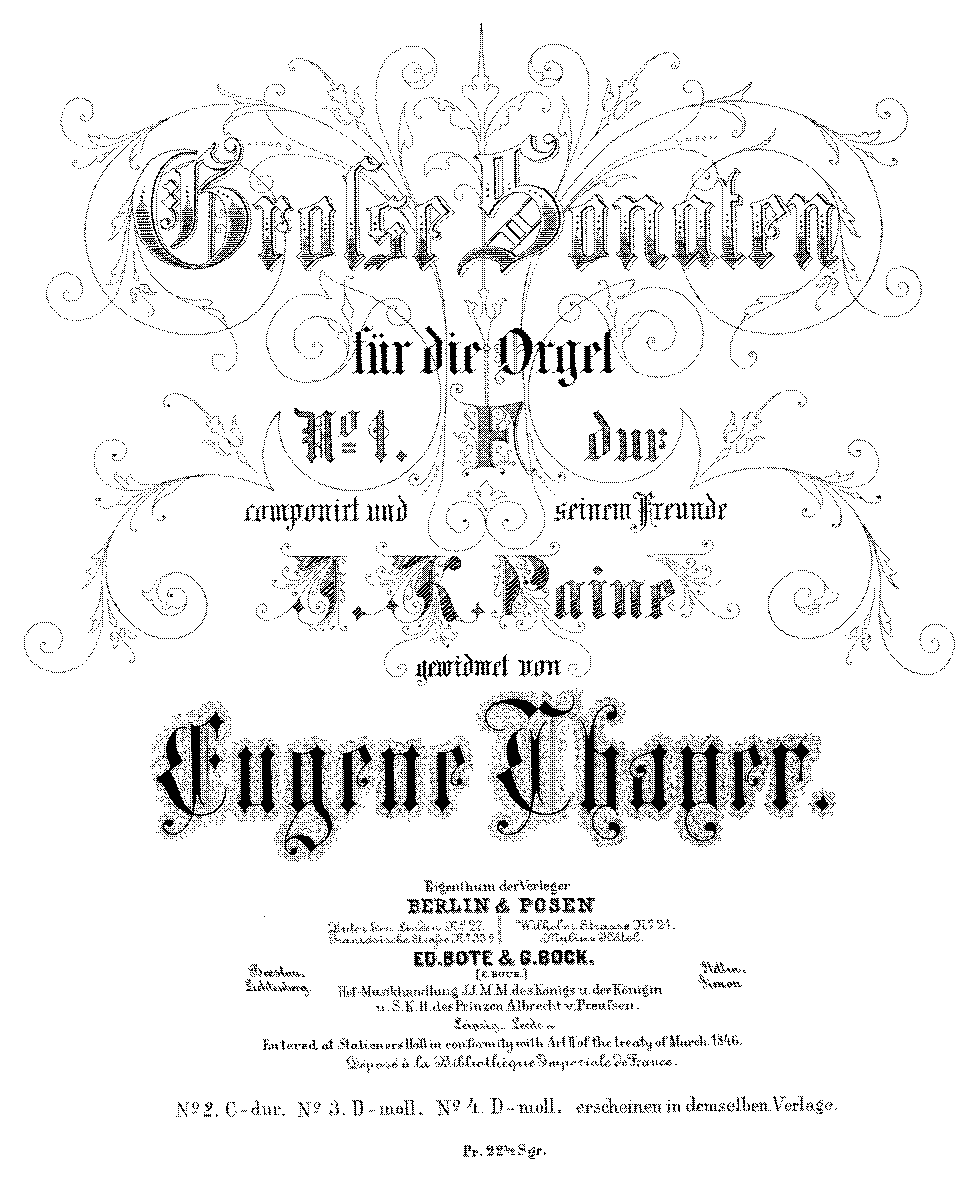
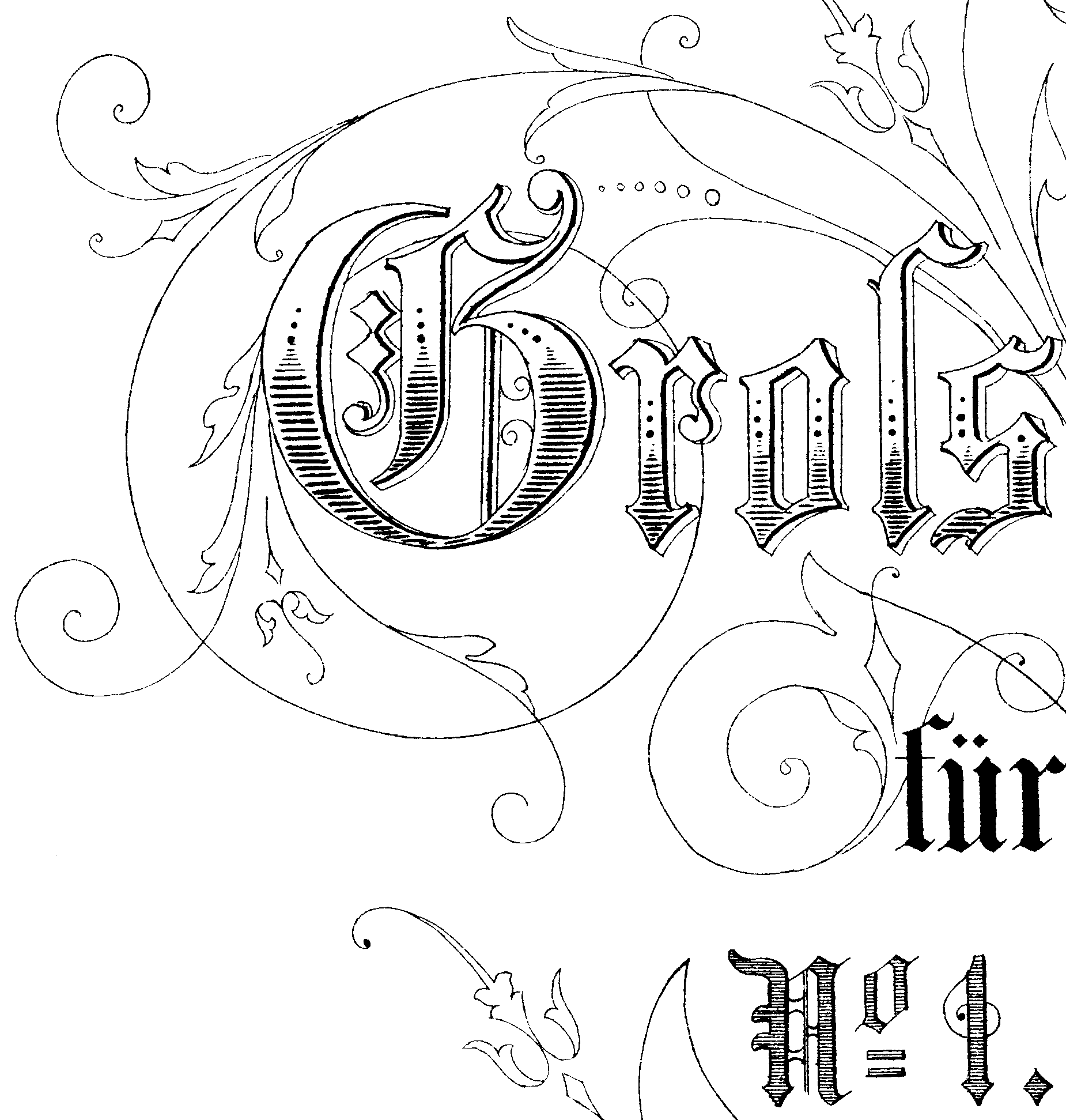
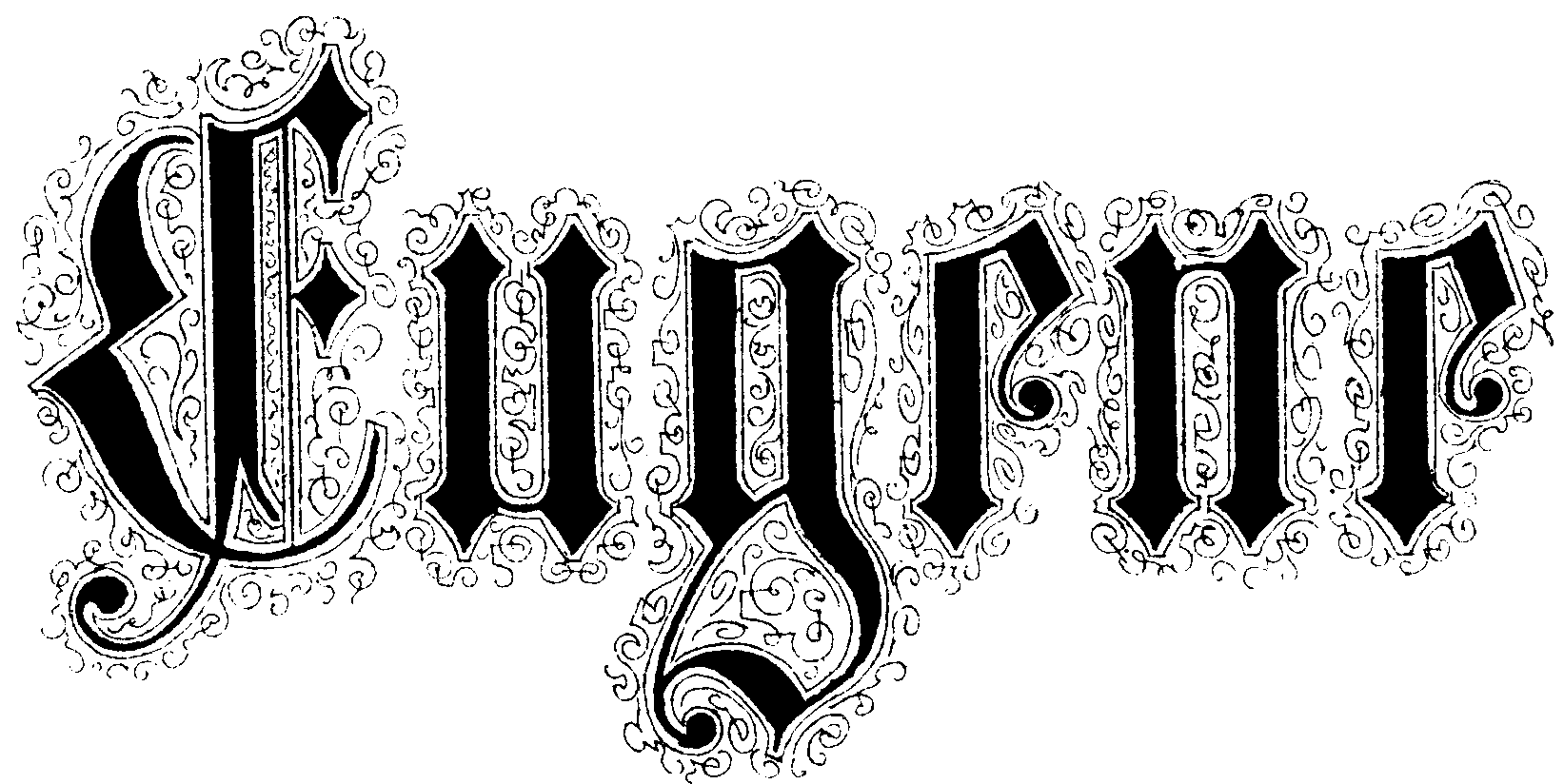
And, of course, as time passed, color was added, and here are examples of before and after restoration. Note the library punches. This was conservation?
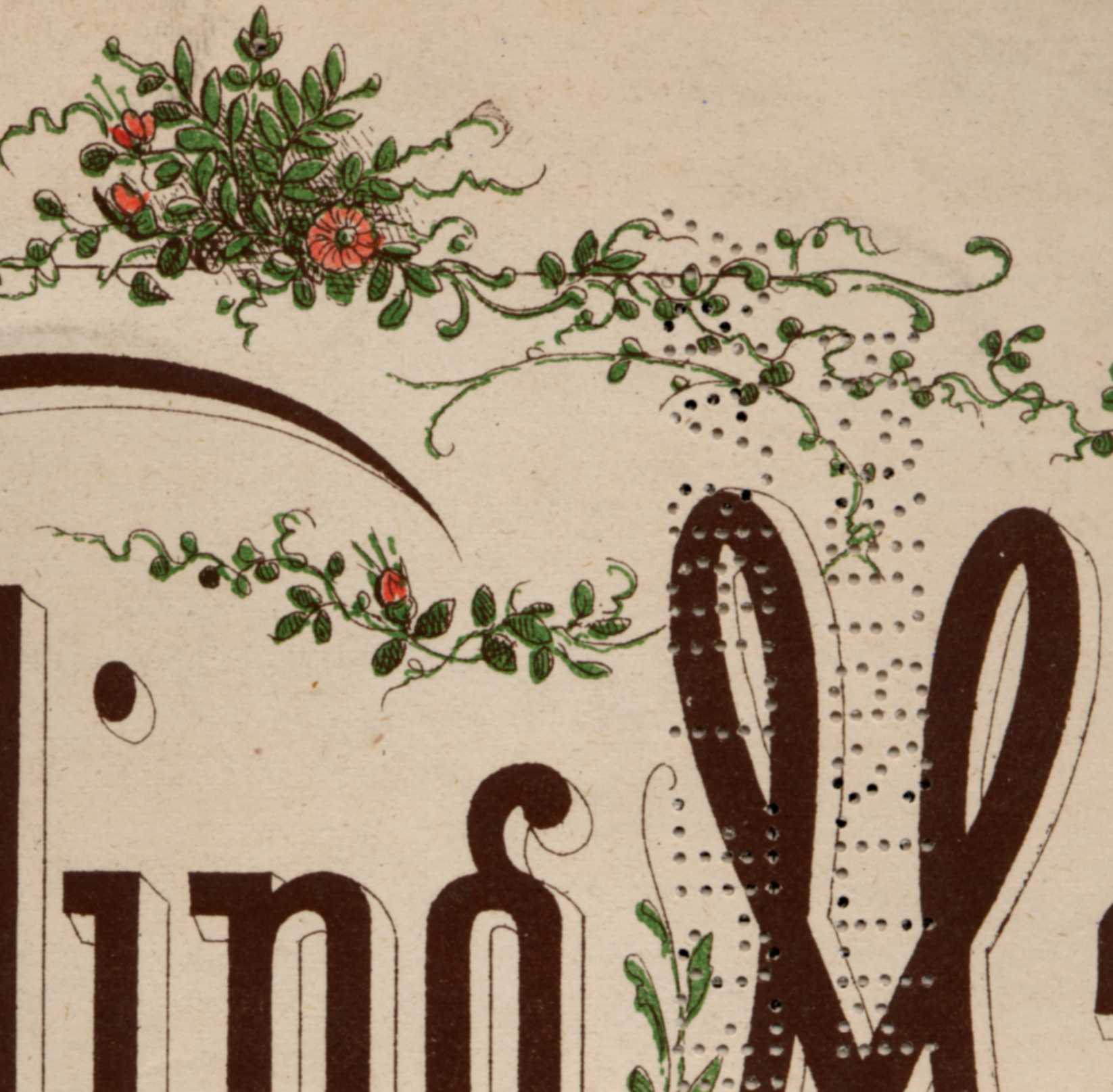
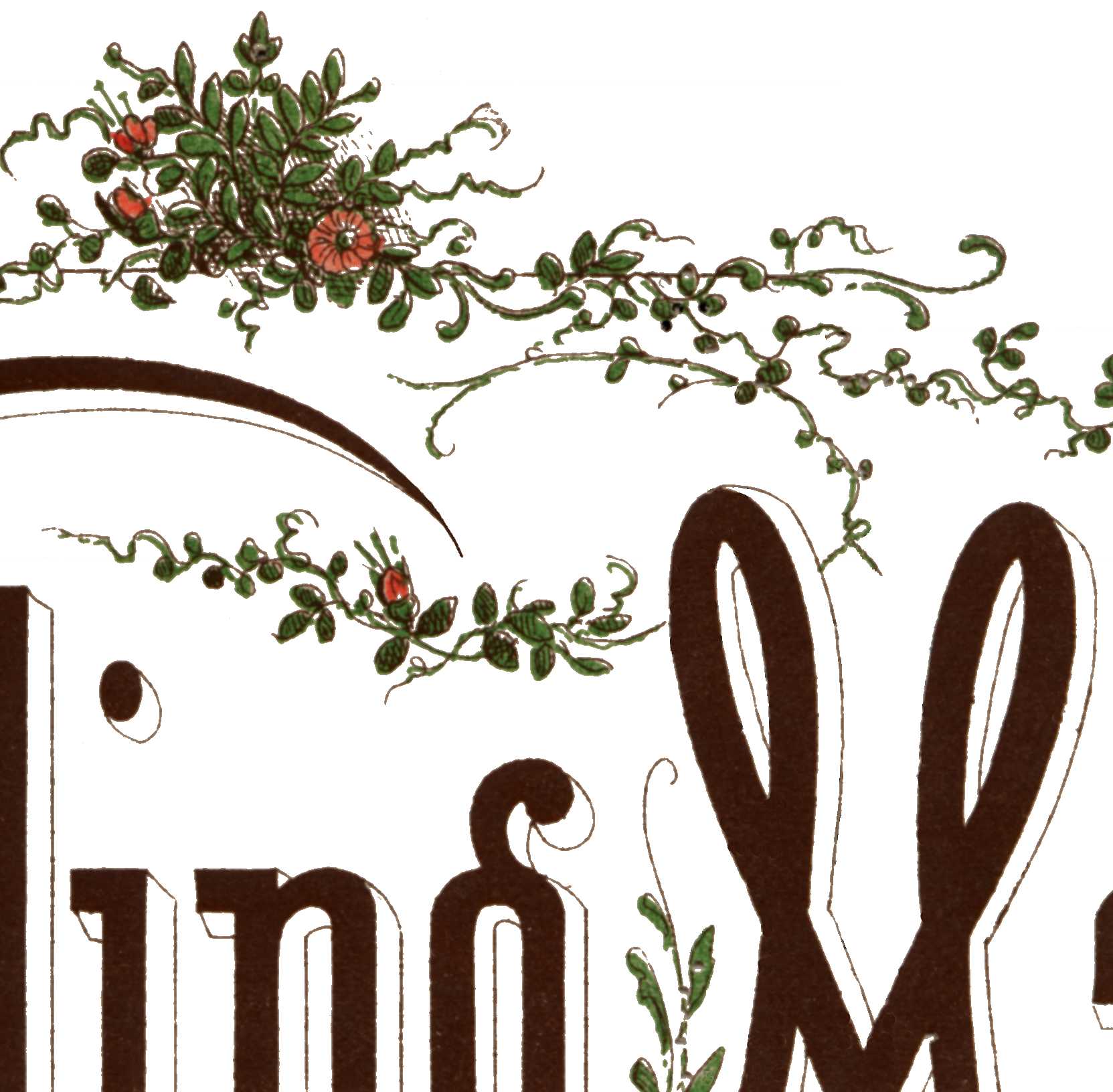
Benefits
Our restoration and distribution of worthy organ music which was abandoned by its original publisher and subsequent owners or controllers of copyright is an effort to slow the demise of printed organ music. The large publishers are more likely to produce a new edition of Bach than to reissue a work from the past, even if they are the controllers of copyright and have an original. Restoration can fill in the gaps that exist. For example, we restored the original Andantino by Lemare, though the edited version is still available. There are differences in the versions and no other publisher was interested; additionally, I added a high quality photo and an interesting article by an expert on Lemare in an attempt to attract attention. For another example, one publisher has recast (the setting of new notation through computer software, usually to avoid the very large paper sizes or the landscape orientation that was popular for many years for organ music) several of Dudley Buck’s pieces, so we have restored those not included in that publisher’s efforts.
You may recall that the music of J S Bach was considered during his last years as old fashioned and was largely ignored until Mendelssohn brought it back to the attention of musicians in Germany. Falling out of fashion is the most often-given excuse for allowing the music of our past to be forgotten and even discarded. Following the period of “decadence,” it was fashionable to look down on the styles and practices of the past. We all know musical cliches today and enjoy making fun of them. It is important to know that these were not cliches during the time they were practiced. They were as much a part of the musical vocabulary as any other facet of music. Since several cycles of this in-and-out of fashion have taken place in Western music, the intelligent musician will realize that this is indeed a cycle which repeats: “Everything old is new again!”
The most serious damage in this was inflicted by the organ teachers in schools who taught that certain music was to be avoided. This prohibited music was usually derided as bad or not good for students or overly sentimental. This was a cover-up for stylistic prejudice, pure and simple! Bad? The music of Eugene Thayer and Dudley Buck is good organ writing and fits the instruments they played perfectly! Paine's counterpoint is first class. Not good for students? The Dudley Buck pedal exercises are used by some today! Chadwick’s teaching of organ, theory, and composition led to his appointment as Director of the New England Conservatory. Overly sentimental? Perhaps so, but is this also a reason to shun Franck or Schubert? The fair-minded organist will make the decision based on his training and musical judgment, not on what is an accepted style of the time.
Time has begun its inevitable swing back to the past. Transcriptions are being played and recorded today as never before. The gems of our organ past are appearing in churches and concert halls, and teachers are once more using some of the pieces which are certain to improve interest and audience numbers for a young organist. Closing your mind to music of the past was once a reason for discarding the music of J S Bach. An open mind is better.
Scanned Music and the Internet
As with so much in our age of information, the widespread adoption of use of the internet contains both blessings and curses.
What Can I Do?
Buy music from the publishers who still keep their titles in print and from publishers who produce new music and keep it in print. The more music we buy, the longer and more likely they will be to continue publishing organ music. Support your local music store, if there is one near you. Call a music store and buy from them if they are distant. Contact a composer and offer a commission for new organ music. We have seen the positive effects of this due to commissions from such luminaries as Marilyn Mason and Michael Barone. Buy your organist some new music and ask him to play it. Write about organ music you like in concert programs, church bulletins, essays, emails, blogs, and music magazines. Increased interest will prolong the life of our great organ music heritage.
Thank you for reading my thoughts on this subject. If you have suggestions for changes, improvements, or to suggest a piece for restoration, please Email me. Also, I hope you will look through our Catalogue of restored organ music to see the variety of pieces already available for the first time in decades.